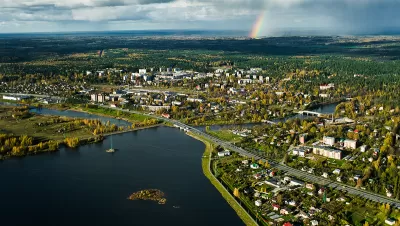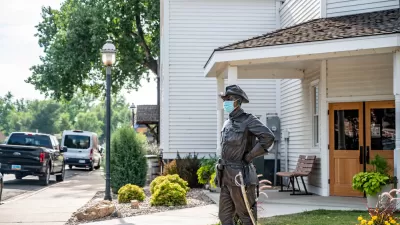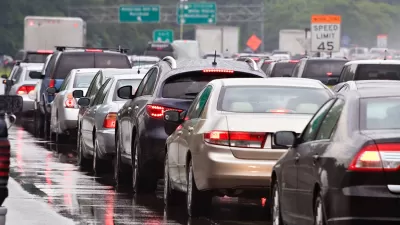As urban economies continue their upward trajectory, residents of counties once considered rural are commuting to cities. This has had both negative and positive effects on the communities in question.

For much of the past century, Hamilton Lombard writes, sprawl drove metropolitan growth. Now it's different. "[...] A major reason for this geographic growth today is that as the urban cores of metropolitan areas have grown larger, they have attracted a rising number of commuters from nearby rural counties, in many cases causing the rural counties to become part of their metropolitan area."
Much has been made of metropolitan corridors comprising urban centers as well as their suburbs and exurbs, which often blend together to form a vast, sprawled-out regional population center. When rural counties join these metro areas, they're often experiencing in-county job losses as many residents stay put and endure longer commutes.
This isn't always a uniformly bad thing. "The shift away from an economy centered on agriculture and manufacturing has been difficult for many communities, but it also has had its benefits. Farming is an unreliable business, dependent on weather and volatile commodity prices. Factories have not always provided stable jobs either."
Highlighting the continued importance of long-distance transportation infrastructure, formerly rural areas can benefit from connections to a wider metropolis. "Though becoming part of a metropolitan area has not prevented job losses in most of these counties, being connected with a larger, more diversified metropolitan economy has typically meant more economic stability than in the past."
FULL STORY: The metropolitanization of rural America

Alabama: Trump Terminates Settlements for Black Communities Harmed By Raw Sewage
Trump deemed the landmark civil rights agreement “illegal DEI and environmental justice policy.”

Study: Maui’s Plan to Convert Vacation Rentals to Long-Term Housing Could Cause Nearly $1 Billion Economic Loss
The plan would reduce visitor accommodation by 25% resulting in 1,900 jobs lost.

Planetizen Federal Action Tracker
A weekly monitor of how Trump’s orders and actions are impacting planners and planning in America.

Wind Energy on the Rise Despite Federal Policy Reversal
The Trump administration is revoking federal support for renewable energy, but demand for new projects continues unabated.

Passengers Flock to Caltrain After Electrification
The new electric trains are running faster and more reliably, leading to strong ridership growth on the Bay Area rail system.

Texas Churches Rally Behind ‘Yes in God’s Back Yard’ Legislation
Religious leaders want the state to reduce zoning regulations to streamline leasing church-owned land to housing developers.
Urban Design for Planners 1: Software Tools
This six-course series explores essential urban design concepts using open source software and equips planners with the tools they need to participate fully in the urban design process.
Planning for Universal Design
Learn the tools for implementing Universal Design in planning regulations.
Caltrans
Smith Gee Studio
Institute for Housing and Urban Development Studies (IHS)
City of Grandview
Harvard GSD Executive Education
Toledo-Lucas County Plan Commissions
Salt Lake City
NYU Wagner Graduate School of Public Service





























